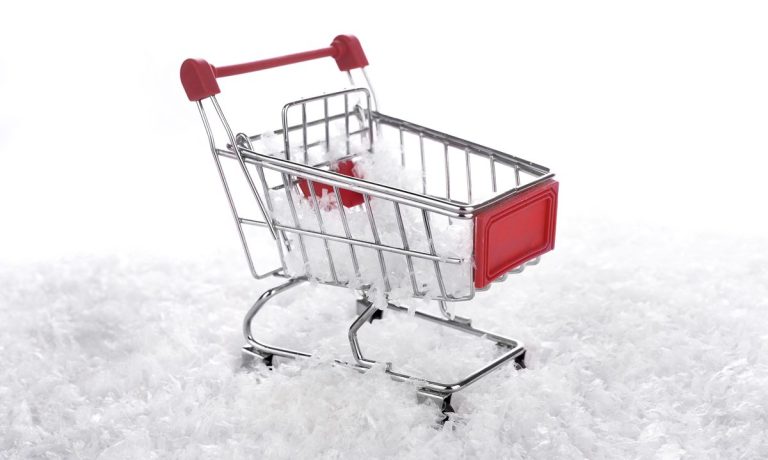
Back in the late-Neolithic period — say, around 1995 — as ascending 24-hour cable news stations challenged the status quo of local network TV affiliates and newspapers, they all seized upon a money-making opportunity that had been literally raining down for eons: storm panic buying.
You can imagine how those meetings went. Big advertiser says, “Storm’s coming.” Their network counterpart nods knowingly, and within hours broadcasters are predicting something that sounds more like an extinction-level asteroid strike than wind and precipitation.
As a winter “bomb cyclone” — known as “bombogenesis” by polysyllabic pests — covers parts of the U.S. in snow and ice this weekend, chances are you and several million others were inside a grocery store Friday night madly throwing items into your cart — milk, eggs, bread, cheese, candy, cookies, more candy, wine, liquor, ice cream for irony — you know, the staples.
That’s panic buying. We all remember the spring and summer of 2020, right? Bare shelves in grocery stores. Even Amazon was out of things. Lots of things. We even signed away our certified, preowned Lexus to an opportunistic retail associate for a box of Purell and a tip off on the next bleach delivery. She’ll be CEO someday with that mercenary mindset. Inspiring really.
Elucidating the psychology of panic buying, University of Georgia Professor Alan Stewart told NBC Boston on Thursday (Jan. 27) that “the uncertainties a large weather event introduces can heighten people’s anxieties about access to products and services.”
Clearly possessing a master’s in understatement along with his more tangible academic credentials, Stewart has studied panic buying impulses during the COVID crisis.
In a 2020 interview with college news site UGA Today, he said, “Psychologically, in our global economies, most of us really do not know the origin and history of our ‘stuff’ — how it is made and where it comes from. Without this knowledge and with rumors of scarcity, people begin to buy and stock up out of fear of the unknown.”
Unknowns like, “How much candy do we have?” and, “Will our candy run out before the thaw?”
“Even with presumably rational reporting about a good, steady supply of most things people buy in the grocery store, people seem to fear running out, running short, or doing without,” he said.
No one likes the idea of doing without. We may follow the “Best Foods to Stock in Your Pantry Before a Blizzard Hits” advice from Allrecipes — especially their recommendation to load up on dark chocolate and hot cocoa mix. We’ve made our position clear on sugar and storm prep.
Connected economy tech players are onto bombogenesis buying sprees. We love WeatherAds, an automated media platform that times brand ad campaigns to maximize storm spend.
For all the harm and inconvenience they cause, there’s no arguing the fact that storms make ideal connected economy events. Mobile order-ahead and delivery. Endless streaming entertainment options. No reason whatsoever to get off the couch. Thank you, storm gods.
See also: Amazon Watch Parties Enable 100+ Users To Stream Together
Storms also wreak state and municipal payments havoc. Know the kid you pay to snow blow your driveway? Scale that by about 300 million and one begins to grasp the problem.
Even in 2019, then-acting Federal Emergency Managment Administration chief Peter Gaynor said federal spending on natural disasters is “unsustainable” adding that “The only way we can survive as a nation is to set aside pre-disaster money and build state and local capacity,” per a Pew Research blog.
“The only way we can survive as a nation?”
OK, everyone just calm down. It’s only snow. Long as you’ve got shelter, heat — and a candy stockpile — pack a snowball and make the best of it.
Incidentally, as a news outlet we’ve been asked to remind PYMNTS readers to immediately run out and start buying — anything, everything — because “bombogenesis” is coming.
Is that like “snowmageddon” or “snowpocalypse?” We’re too busy panic shopping to Google it.
See also: Supermarkets Hoard Staples For Holidays, COVID Resurgence